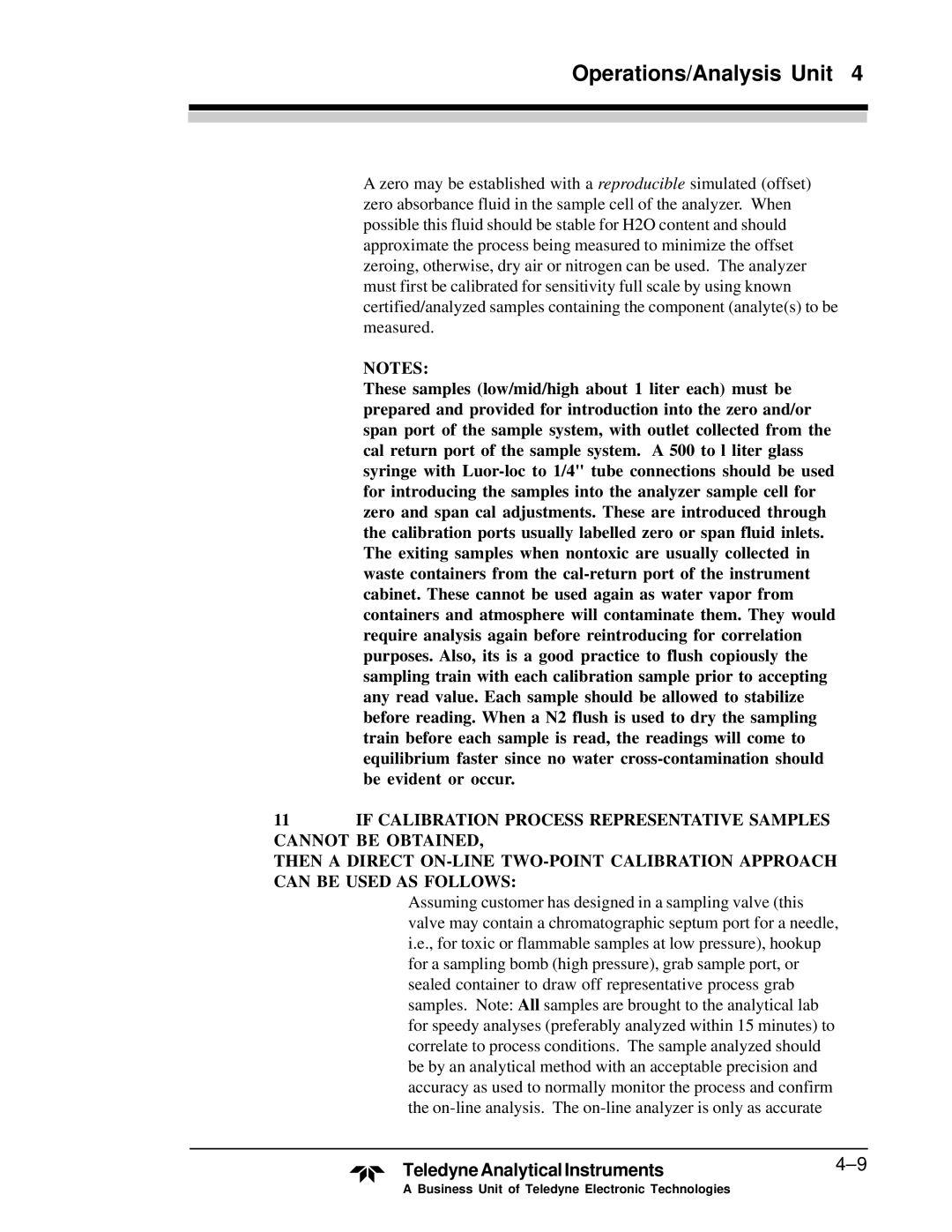
Operations/Analysis Unit 4
A zero may be established with a reproducible simulated (offset) zero absorbance fluid in the sample cell of the analyzer. When possible this fluid should be stable for H2O content and should approximate the process being measured to minimize the offset zeroing, otherwise, dry air or nitrogen can be used. The analyzer must first be calibrated for sensitivity full scale by using known certified/analyzed samples containing the component (analyte(s) to be measured.
NOTES:
These samples (low/mid/high about 1 liter each) must be prepared and provided for introduction into the zero and/or span port of the sample system, with outlet collected from the cal return port of the sample system. A 500 to l liter glass syringe with
11IF CALIBRATION PROCESS REPRESENTATIVE SAMPLES CANNOT BE OBTAINED,
THEN A DIRECT
Assuming customer has designed in a sampling valve (this valve may contain a chromatographic septum port for a needle, i.e., for toxic or flammable samples at low pressure), hookup for a sampling bomb (high pressure), grab sample port, or sealed container to draw off representative process grab samples. Note: All samples are brought to the analytical lab for speedy analyses (preferably analyzed within 15 minutes) to correlate to process conditions. The sample analyzed should be by an analytical method with an acceptable precision and accuracy as used to normally monitor the process and confirm the
TeledyneAnalyticalInstruments4–9
A Business Unit of Teledyne Electronic Technologies
